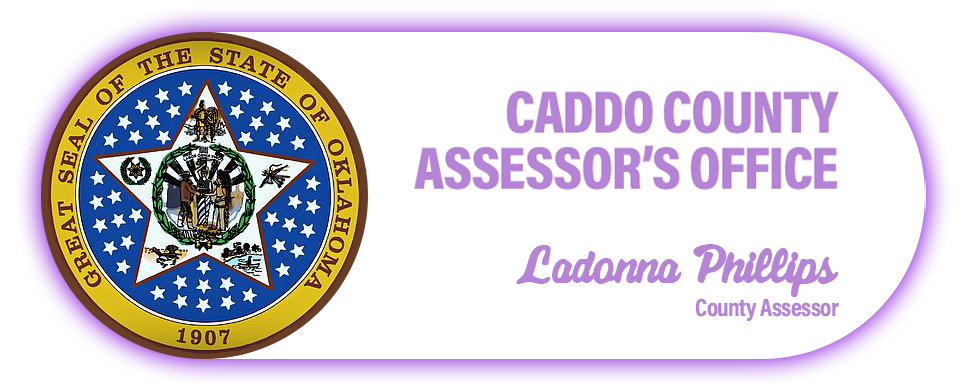Glossary
Actual Fair Cash Value - the value or price at which a willing buyer would purchase property and a willing seller would sell property if both parties are knowledgeable about the property and its uses and if neither party is under any undue pressure to buy or sell and for real property shall mean the value for the highest and best use for which such property was actually used, or was previously classified for use.
Ad Valorem Taxation - according to the value of the property.
Additional Homestead Exemption - If you are head of household and qualify for homestead exemption, you may also qualify for additional homestead. You may receive an additional $1,000 assessment exemption if the gross household income from all sources did not exceed $30,000 for the past calendar year. You may file for additional homestead between January 1 and March 15, or within 30 days from the date of notice of valuation increase. There is a simple form on income that you will fill out as part of your application. If you are 65 or older as of March 15 of the filing period and presently qualify for additional homestead, you will not have to renew the additional homestead annually. However, it will be the responsibility of the taxpayer to notify the Assessor’s office if your income exceeds $30,000.
Annual Abstract - a summary of assessed valuations on all taxable property within the county. Completed no later than June 15th or first working day thereafter.
Arbitrary Assessment - an assessment from the best information available in the absence of a return by the taxpayer. An arbitrary assessment must be protested within ten days of the date of the notice.
Assessed Value - the taxable value of real or personal property either of individual items of personal property or parcels of real property or the aggregate total of such individual taxable items or parcels within a jurisdiction.
Assessment Ratio - the assessment percentage applied to the taxable fair cash value of the property. Real property's assessment ratio is 11% and personal property is 12% of taxable fair cash value. (S.Q. 675 provides that the assessment ratio will not increase unless approved by a majority of the voters.)
Assessment Roll - a computerized or non-computerized record required by law to be kept by the county assessor and containing information about property within a taxing jurisdiction.
Assessment Year - the year beginning January 1 of each calendar year and ending on December 31 preceding the following January 1 assessment date.
Coefficient of Dispersion (C.O.D.) - a statistical measure of assessment uniformity for a category of property or for all property within a taxing jurisdiction.
Cost - the total dollar expenditure for labor, materials, legal services, architectural design, financing, taxes during construction, interest, contractor's overhead and profit and entrepreneurial overhead and profit.
County Board of Equalization - the board which, upon hearing competent evidence, has the authority to correct and adjust the assessment rolls in its respective county to conform to fair cash value.
Disabled Veteran's Exemption - The reduction in the taxable value of a homestead property owned by a 100% permanently disabled veteran as authorized by law.
Homestead Exemption - the reduction in the taxable value of a homestead as authorized by law.
Increase Limitation - limits increasing of fair cash value on real property for tax purposes by not more than 5% in any taxable year unless improvements have been made to the property or if title to the property has been transferred, changed or conveyed to another person.
Market Price - is the amount actually paid in a particular transaction.
Market Value - is an estimated sale price that would result from careful consideration of all information by a prudent, responsible buyer and seller under conditions of a fair sale (an arm's length sale).
Mill - is one-thousandth of a dollar. For convenience in Oklahoma, a tax rate (the sum of all mills levied) is expressed as dollars per thousand dollars of assessed value.
Neighborhood - The environment of a subject property that has a direct and immediate effect on value.
Notice Value/Date - This refers to the assessment notice that is mailed to a property owner concerning changes in the assessed value of the property. It contains information such as the Market and Assessed values as well as the date it was mailed. If property owners disagree with this change they must request an informal hearing with the Assessor's Office within the specified time frame regarding any change. The complaint shall be made upon a form prescribed by the Oklahoma Tax Commission.
Parcel - a contiguous area of land described in a single description by a deed or other instrument or as one of a number of lots on a plat or plan, separately owned and capable of being separately conveyed.
Penalty - if any personal property is not listed by the person whose duty it is to list such property on or before March 15 on any year, when such property is assessed there shall be added to the assessed valuation of such property as a mandatory penalty, amounts as follows: 1) If listed or assessed after March 15, but on or before April 15, ten percent (10%) of the assessed value. 2) If listed or assessed after April 15, twenty percent (20%) of the assessed value. If the county assessor fails, neglects, or refuses to add the valuation penalty, he shall be liable on his official bond for the amount of said penalties.
Property Status - The actual taxable status of the property.
- Capped - taxable value of the property is limited to increasing of fair cash value on real property for tax purposes by not more than 5% in any taxable year unless improvements have been made to the property or if title to the property has been transferred, changed or conveyed to another person.
- Actual Fair Cash - taxable value is the estimated sale price that would result from careful consideration of all information by a prudent, responsible buyer and seller under conditions of a fair sale (an arm's length sale).
- Frozen - taxable value of the property is frozen at the current taxable value due to the owner being 65 or older and meeting the income limitations.
Revaluation - The Oklahoma Legislature established the revaluation program in 1969 (See O.S. 60 Statute 1481.1). This program was designed to be a revaluation of all taxable property. The County Assessor was given the task of maintaining an active and systematic program to be sure that all county property be appraised routinely in accordance with an approved schedule.
Senior Valuation Freeze - Provides for those who apply and qualify, the taxable value will not increase on a homestead property owned by a person 65 years of age or older before January 1 and whose gross household income does not exceed the H.U.D. qualifying income for the preceding year. Each year the new income limit will be provided to the assessor office in the late fall by the Oklahoma Tax Commission. The freeze will be removed if: improvements are made to the property i.e. New structure etc… the value of the new improvement is added to the frozen value.
Situs - where the property is physically located.
Tax Roll - a listing of all taxable property in the county for a given year.
Taxable Fair Cash Value - The fair cash value to be used in computing the gross assessed value for this years taxes. (Note: Due to Constitutional Amendments (S.Q. 676) this value will not exceed a 5% increase over the previous year value unless improvements were made to the property, if title to the property is transferred, changed, or conveyed to another person, or if status for the senior valuation freeze has changed.)
Visual Inspection - Beginning January 1, 1991, each County Assessor is required to maintain an active and systematic program of visual inspection. The County Assessor is further required to establish an inspection schedule which will result in the visual inspection of all taxable real property at least once each 4 years. A copy of this 4-year visual inspection plan is also to be submitted to the Oklahoma Tax Commission for approval. In addition to the 4-year inspection cycle, the Assessor must annually review the values of all county property. The values of each classification of property (Residential, Commercial/Industrial and Agricultural) must reflect the market as of January 1 of that year.
Take me back to Information.


